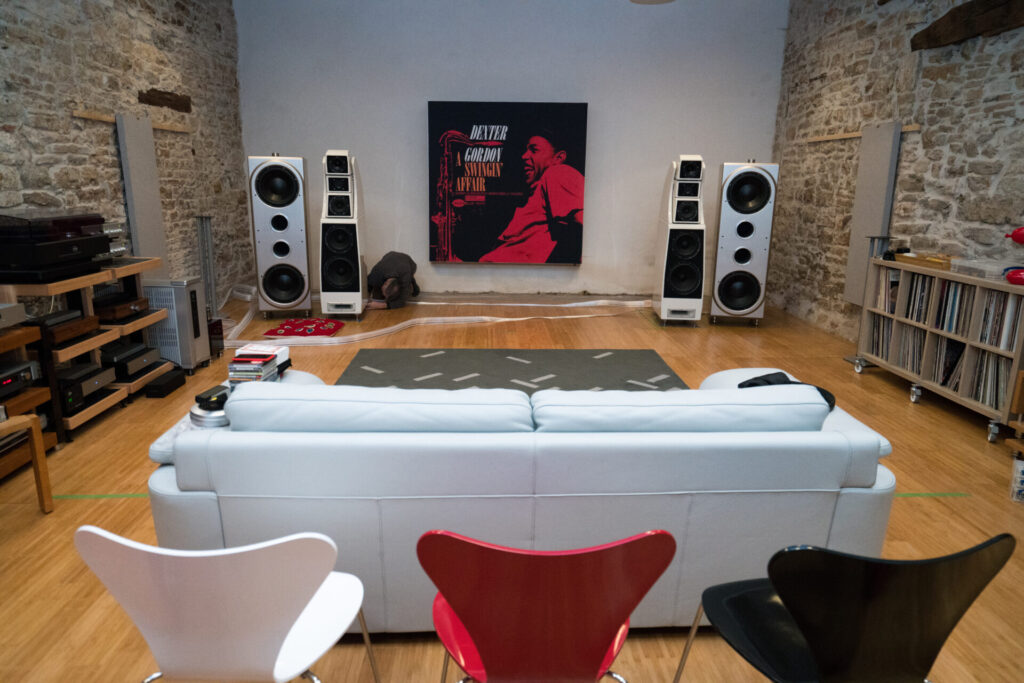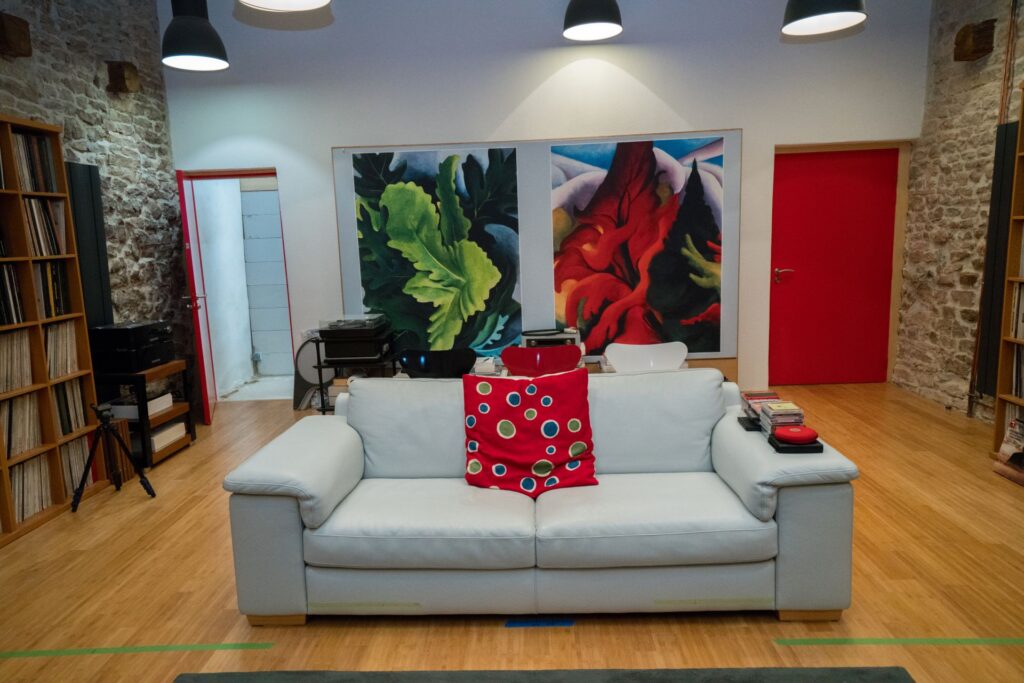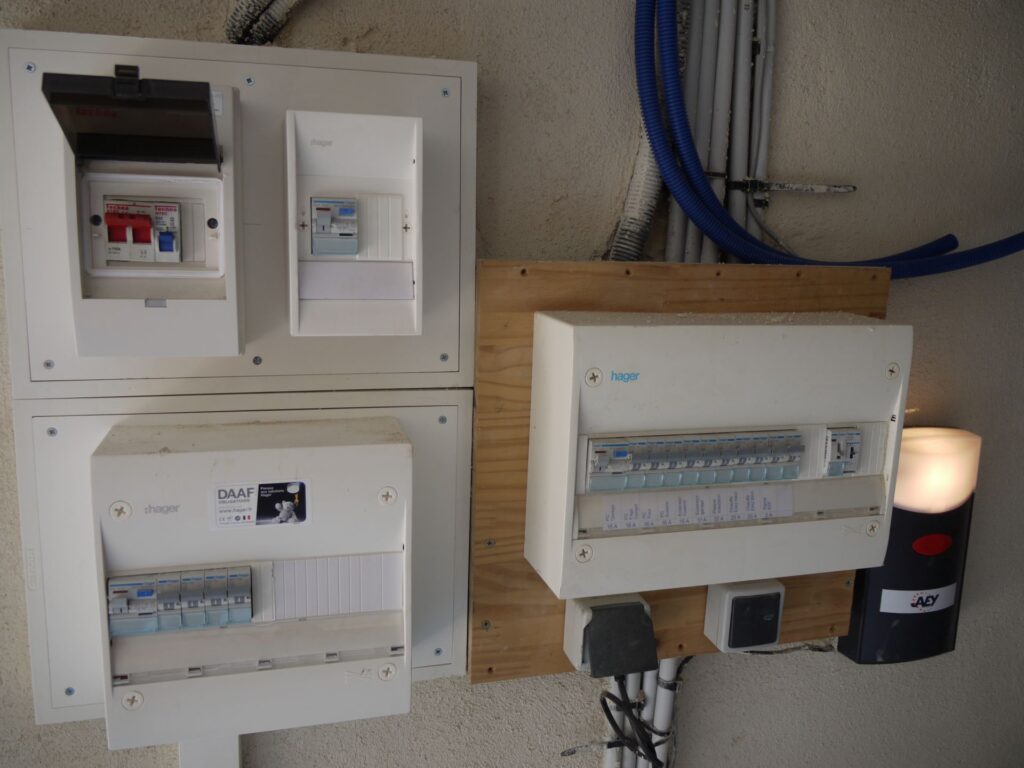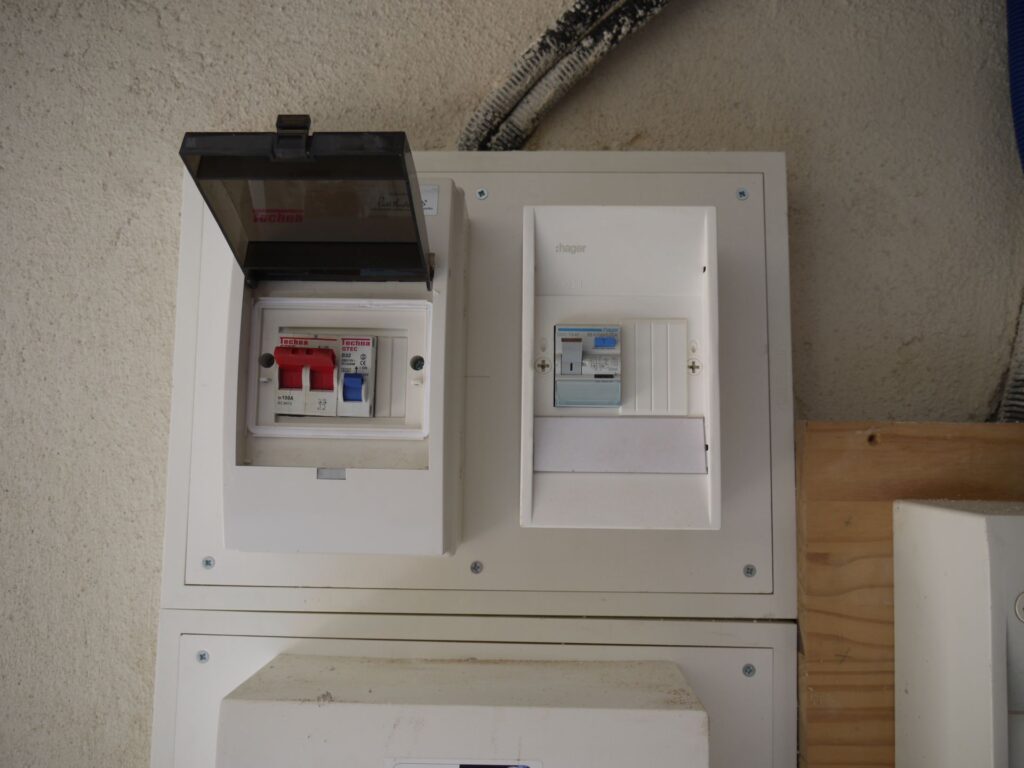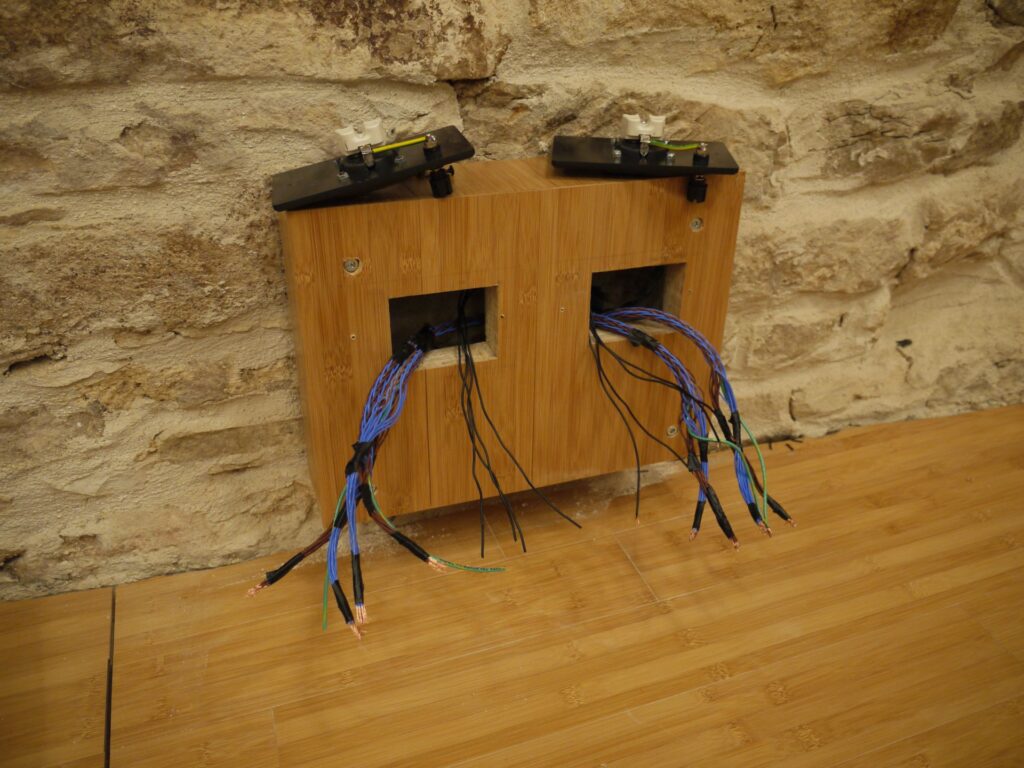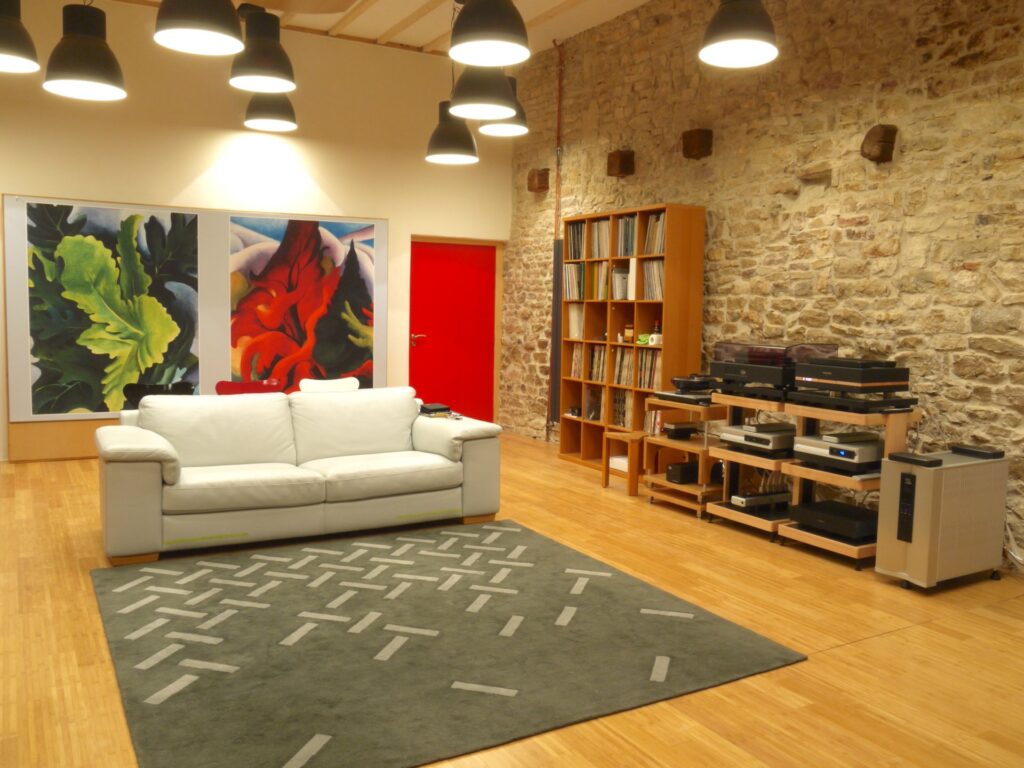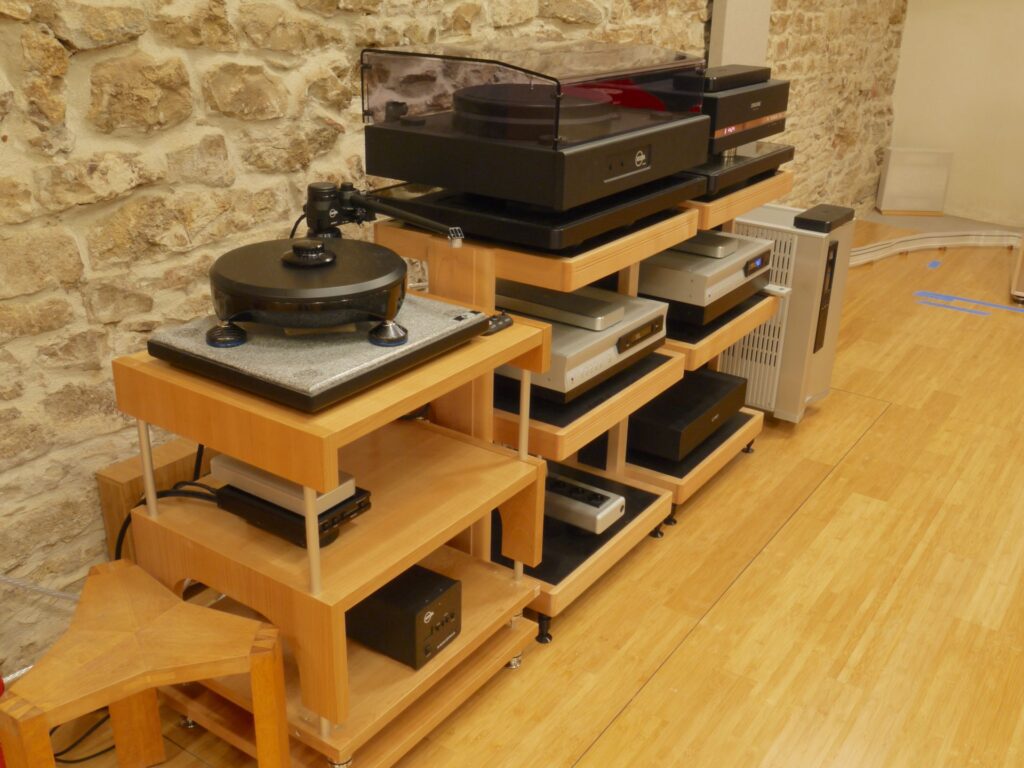Physical Structure and Furnishings
Rather than being built from the ground up, in this case the listening space is constructed within an existing, stone-built barn. The vast interior has allowed us to select golden ratio dimensions for length (9.5m) and height (4.0) to match the existing 6.5m width, with materials and construction to suit. The front and sidewalls are all solid stone, around 70cm (a little over 2’) thick. The front wall is plastered in order to conceal various door and window cavities that needed to be filled, but the sidewalls are left bare, leaving a rough, random, dispersive surface. The rear wall is formed from insulation blocks with concrete filling. None of the walls are actually parallel (or even very straight) which contributes to the distributed resonant nature of the room, but makes precise speaker placement far more of a challenge than the old, super-symmetrical arrangement.
The floor is formed from solid, poured concrete, but has been sub-divided into three physically separate zones – one at the front of the room, supporting the speakers; a second to the side to support the system and the third representing the rest of the floor area. Solid bamboo is glued directly to each of the concrete base areas, creating three distinct and easily identifiable zones. The speaker support area extends to one-third depth within the room, allowing maximum flexibility for positioning. Direct, roll-in access is provided across hard floors and the main doors to the Music Room are both taller and considerably wider than standard. Combined with the dimensions of the room this means that literally any existing system or equipment can be handled or accommodated – practically and, if not easily, then at least as easily as possible. With many speaker systems and amplifiers weighing in well into the hundreds of kilos these days, easy access is an essential requirement.
The ceiling is formed from 30cm (1’ deep) wooden I-beams with 18mm compressed OSB used to form the floor. These boards are structurally similar in many ways to plywood, but with a far more random nature. The cavity between the ceiling and the supported floor is filled with acoustic wool insulation and the lower joists are left open to further randomise the surface. The floor space above the new room offers a massive storage area, accessed by an electric hoist capable of handling even the largest crates – thus solving one of the biggest logistical headaches associated with high-end reviewing.
In keeping with the original concept, all absorptive elements are elective and removable. Furnishing is light, with a large, thick wool carpet and sofa in the centre of the floor space. Additional stacking chairs are available, but these are simple metal frame designs, without upholstery. The rest of the furniture consists of record storage and the system racking, which is arranged symmetrically in the rear half of the room.

